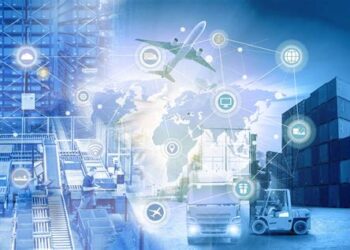In today’s digital era, social media has revolutionized almost every aspect of human interaction, including how we consume and distribute news. What once was the domain of newspapers, radio broadcasts, and television news has now transformed into a fast-paced, user-driven digital space. With platforms like Facebook, Twitter (now X), Instagram, TikTok, and YouTube serving as primary news sources for millions of users, the traditional media landscape has been completely reshaped.
This article explores the transformative effects of social media on news distribution, examining both the advantages and drawbacks of this shift, the changing roles of journalists, the emergence of misinformation, and how audiences participate in the news cycle like never before.
A. The Rise of Social Media as a News Source
Social media has become one of the dominant channels for receiving and sharing news. According to several global media studies, an increasing number of individuals, particularly those under 35, turn to platforms like Twitter or Facebook for breaking news rather than traditional outlets.
1. Accessibility and Convenience
The foremost reason for this shift is convenience. Unlike printed newspapers or scheduled TV bulletins, social media platforms deliver news in real time. A user can open their favorite app and scroll through a curated feed of headlines, opinions, and videos without waiting or searching extensively.
2. Personalization
Algorithms used by these platforms analyze user behavior to offer a personalized stream of information. This makes users more likely to engage with stories relevant to their interests or past interactions.
3. Speed and Instant Updates
News breaks on social media often before it appears on official media channels. Whether it’s a political development, natural disaster, or celebrity update, eyewitnesses or involved parties post instant updates that are shared across the globe within minutes.
B. The Shift in Journalism Practices
With the advent of digital tools and social networking platforms, journalism has undergone a major transformation.
1. Journalists as Digital Content Creators
Modern journalists are no longer just writers or reporters. They now operate like digital content creators, using tools such as live streaming, tweets, and short-form videos to reach their audience. Many also maintain active social media profiles to build their personal brand and audience engagement.
2. Real-Time Reporting
Newsrooms have adapted to 24/7 news cycles, with journalists often live-tweeting events, protests, or press briefings. This allows users to follow developments as they happen, eliminating the traditional lag between the event and its reporting.
3. Increased Audience Interaction
Unlike the one-way communication of traditional media, social platforms allow for real-time feedback. Readers can comment, share, and engage with reporters directly, sometimes influencing the development of the news itself.
C. User-Generated Content and Citizen Journalism
The rise of smartphones and the internet has empowered ordinary users to become active participants in news creation and distribution.
1. Viral Videos and Eyewitness Footage
Many of the most impactful news stories in recent years have originated from videos recorded by citizens. Whether it’s documenting police misconduct, protests, or natural disasters, user-generated content (UGC) plays a critical role in bringing raw, unfiltered news to light.
2. Hashtag Movements
Social media-driven movements like #BlackLivesMatter, #MeToo, and #ArabSpring show how user-led reporting can not only inform but mobilize people. These hashtags turn individual voices into collective calls for justice, gaining worldwide attention.
3. Risks and Challenges
While citizen journalism enhances inclusivity, it also comes with risks. The lack of training in journalistic ethics or fact-checking can lead to misinformation, biased storytelling, or invasion of privacy.
D. The Problem of Fake News and Misinformation
The open nature of social media means anyone can post content, regardless of its accuracy. This has led to a significant increase in the spread of misinformation.
1. Viral Misinformation
False stories, conspiracy theories, and clickbait content often spread faster than factual reporting due to their sensational nature. Social media algorithms tend to prioritize engaging content—even if it’s misleading.
2. Political Manipulation
Fake news is not just a matter of miscommunication; it’s often used deliberately to manipulate public opinion, especially during elections or global crises. State-sponsored propaganda and troll farms have exploited social media to push agendas and discredit opponents.
3. Solutions in Progress
Social media companies are now introducing fact-checking labels, content moderation, and AI detection tools to reduce the spread of fake news. However, the scale of the problem makes it difficult to address entirely.
E. Influence on Traditional News Outlets
Traditional media has not been replaced but has had to evolve rapidly in response to social media’s dominance.
1. Social Media Integration
Major news organizations like CNN, BBC, and The New York Times actively use social media to distribute content. Many have social media teams dedicated to content curation, trend analysis, and digital storytelling.
2. Loss of Revenue
The rise of social media platforms has drawn audiences and advertising dollars away from traditional media outlets, forcing many newspapers and broadcasters to cut staff, reduce print editions, or pivot to digital subscriptions.
3. Adapting to Short-Form Content
With users accustomed to quick-scroll content, many outlets now produce short headlines, infographics, and video clips to stay relevant. Long-form investigative journalism has become a niche offering for premium subscribers.
F. Changing Audience Behavior and Expectations
Today’s audiences are no longer passive recipients but active participants in the news ecosystem.
1. Engagement and Sharing
People don’t just read the news; they share it, comment on it, and influence what gets visibility. A news story’s popularity is often judged by how many shares, likes, or retweets it receives.
2. Selective Exposure
Social media users tend to follow accounts that align with their beliefs, leading to the creation of echo chambers. This reinforces biases and contributes to political and social polarization.
3. Demand for Transparency
Modern audiences expect journalists to be transparent, accountable, and responsive. Errors are publicly called out, and news organizations are under constant scrutiny from the public.
G. Ethical Concerns and Privacy Issues
The intersection of social media and journalism raises several ethical questions.
1. Consent and Anonymity
When citizen videos or photos go viral, the subjects are not always aware or consenting. Ethical journalism requires careful handling of such content to protect identities and respect privacy.
2. Verification Challenges
It is increasingly difficult to verify the authenticity of content shared online. Fake images, deepfakes, and altered videos can easily deceive even experienced journalists.
3. Sensationalism Over Substance
The chase for likes and shares sometimes leads to the prioritization of shocking headlines over accurate reporting. This erodes trust in journalism and distorts public perception.
H. The Future of News on Social Media
The landscape will continue evolving as technology and consumer behavior change. Several trends are expected to shape the next decade of news distribution.
1. AI and News Curation
Artificial intelligence is already playing a role in news aggregation, personalization, and even content generation. In the future, AI could tailor entire news experiences based on individual preferences.
2. Video-Dominated Content
Short-form video, especially through TikTok, YouTube Shorts, and Instagram Reels, is emerging as a preferred format for younger audiences. News outlets are adapting by creating visual-first stories.
3. Platform Accountability
Social media companies will face increasing pressure to act as responsible gatekeepers. Regulations may demand greater transparency in algorithm design, content moderation, and data protection.
4. Rise of Independent Creators
Independent journalists and creators using platforms like Substack, Patreon, or YouTube are gaining significant followings. This decentralizes news authority and offers alternative voices a chance to thrive.
Conclusion
The impact of social media on news distribution is profound, multifaceted, and ongoing. While it has democratized access to information and enabled real-time updates, it has also introduced new challenges such as misinformation, ethical concerns, and economic disruption for traditional media.
To thrive in this new landscape, both media organizations and audiences must adapt. Journalists must uphold integrity while embracing digital tools, and users must become critical thinkers, capable of discerning truth from fiction.
As we move forward, the balance between speed, accuracy, and ethical responsibility will define the success of journalism in the social media age.














